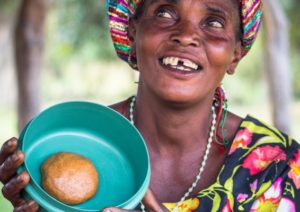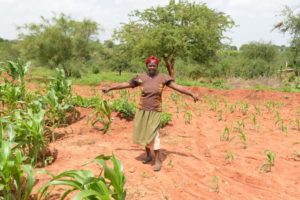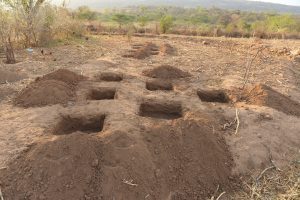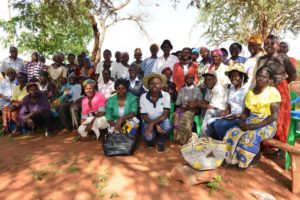
“Landscape approaches” seek to provide tools and concepts for allocating and managing land to achieve social, economic, and environmental objectives in areas where agriculture, livestock, mining and other productive land uses compete with environmental and biodiversity goals.
In this article, the Center for International Forestry Research‘s (CIFOR) James Reed and Terry Sunderland discuss getting these approaches off the ground with a new, five-year project.
Given the vast range of landscapes on this earth, we have yet to devise a singular definition of the landscape approach, but this is how we described the aim and purpose in a research paper back in 2013: The term can be as elastic as the changing and developing environments in which it’s meant to be implemented – a landscape approach is, inherently, a context-based process. As such, we assert there is not a single landscape approach, as is often presumed, but a wide range of landscape approaches that can be applied in differing geographical social and institutional contexts.
In an attempt to reconcile competing land use objectives, landscape approaches have increasingly become a dominant discourse within the conservation and development lexicon. It is now recognized that sectorial silos must be overcome to start down sustainable development pathways acknowledging interdependencies between sectors operating within multifunctional landscapes — and tropical landscapes in particular, which perpetually see gaps between knowledge and implementation and between policy and practice. Consequently, while the landscape approach discourse has continued to evolve, attempts at implementation — and particularly evaluation — in the tropics remain nascent.
Watch: FTA scientists feature in innovative series of talks on landscapes
Significant advances have been made in how we think about landscape approaches, be that in conceptual frameworks, methodological tools and resources, reviews of theoretical development and implementation, or operational guidelines. But putting them into action and monitoring progress has been a different story.
Now is the time to take this next step – to build on this momentum and see how landscape approaches can work on the ground. With all the talk about their potential, how are they put into action, and to what extent are they effective in achieving multiple objectives?
The German Federal Ministry for the Environment, Nature Conservation and Nuclear Safety (BMUB) has recently funded CIFOR and partners to operationalize landscape approaches in three tropical countries – Indonesia, Burkina Faso and Zambia – over the course of five years. In this work, we seek not only to use landscape approaches to address challenges in communities in these countries, but also to observe the implementation process and local uptake of such approaches. We plan to convey our findings as we go along so that others can learn simultaneously from our work.
Read also: The concept and development of the ‘landscape approach’

OPERATION OPERATIONALIZE
Recent UN conventions for biodiversity, climate change and sustainable development have all called for more integrated and sustainable approaches to landscape governance. International policy dialogues are increasingly doing away with perceived antagonisms between sectors and facilitating greater engagement between forestry, food, water and energy, with an enhanced acknowledgement of the role of the private sector as well.
Yet, uptake of landscape approaches within the tropics has thus far been limited, which is likely in part due to a weak evidence base demonstrating effectiveness. A recent review failed to find a single definitive example of a landscape approach in the tropics, or at least reported in scientific literature. This is not to say that they do not exist, but perhaps that grass-roots efforts lack capacity or motivation to monitor progress and formally report findings.
This project will seek to address this gap as CIFOR and partners will assume a mediating role within landscapes in Burkina Faso, Indonesia and Zambia. With a particular focus on the contribution of biodiversity and a remit to engage policy, practice and people, we will facilitate multi-stakeholder platforms and identify linkages with existing institutional structures within each of the landscapes. Through working with existing frameworks and publicly available information (such as census, health and income data, and remote sensing imagery) we hope to further develop a model for scaling up our efforts easily adopted by governments, NGOs and other institutions.
Read also: Agroforestry offers pathways to sustainable landscape restoration
A MATTER OF TIME
The long-term nature of the funding is a crucial foundation for this effort, as it presents a rare opportunity to adopt the mindset of moving from “project to process” by examining and explaining how dynamic processes of social, political, economic and environmental interactions work over time within these landscapes. It allows us to learn deeply through diagnosis, rather than focus on generating immediate results within the rigid confines of a project framework.
As such, over the course of the next five years, our research team intends to embrace two key components of the landscape approach philosophy. Firstly, we will think beyond typical project-cycle timelines and structures and become more fully established and integrated within the target landscapes.
Secondly, in contrast to many prior approaches, we will attempt to facilitate a truly trans-disciplinary approach to all activities, from design and implementation to governance and evaluation. Rather than having a preconceived agenda of what the landscape and its stakeholders should fulfill, we will engage with open minds and a suite of tools designed to enhance stakeholder engagement and action, assess divergence in stakeholder perception and objectives, and in turn generate an increased understanding of the landscape dynamics. Only then, can we build stakeholder capacity to make more informed choices, evaluate progress, and empower previously marginalized groups to more effectively engage in decision-making processes.
Ultimately, we hope that this process will not only contribute to a more robust evidence base for landscape approaches but also enhance stakeholder capacity and landscape sustainability within the target landscapes. A key objective is to work in tandem with landscape stakeholders to co-construct a shared learning platform that can improve our understanding of landscape dynamics in these countries. While we are not blind to the complex challenges of integrating conservation and development, we are committed to implementing and reporting on these landscape approaches and developing an inclusive dissemination strategy with our colleagues at the Global Landscapes Forum. We hope that both the positive and negative outcomes that emerge will contribute to our understanding of the conditions under which landscape approaches can develop and therefore inform future evidence-based research, policy and practice agendas.
By James Reed and Terry Sunderland, originally published at CIFOR’s Forests News.
For more information on this topic, please contact Terry Sunderland at terry.sunderland@ubc.ca or James Reed at j.reed@cgiar.org.
This research forms part of the CGIAR Research Program on Forests, Trees and Agroforestry, which is supported by CGIAR Fund Donors.
This research was supported by the German Federal Ministry for the Environment, Nature Conservation and Nuclear Safety (BMUB)
















